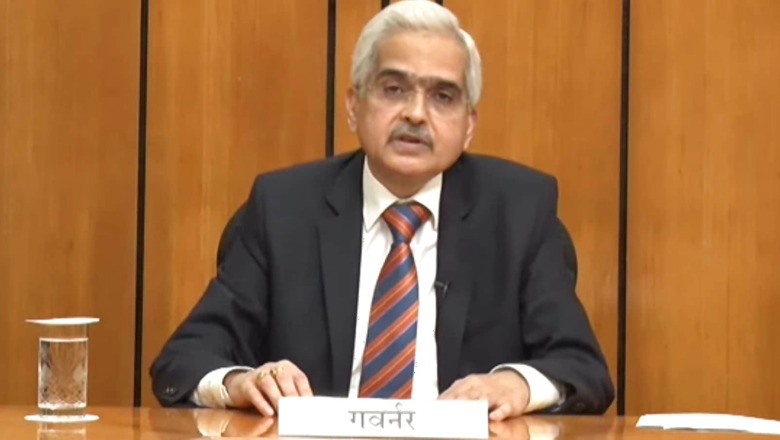
views
Following the Russia-Ukraine war in late February that also led to the worsening of the inflation situation in India due to constrained supply, the Reserve Bank of India (RBI) had to revise upwards its inflation forecast for 2022-23 to 5.7 per cent in the monetary policy review in April, compared with the 4.5 per cent projected in early February. Its Governor Shaktikanta Das on Monday said that after the war started on February 24, everything the RBI had taken into account earlier changed and the central bank put inflation first and growth next.
In an interview with CNBC-TV18, Das while referring to the situation before the war said, “The momentum of inflation, month-on-month, from October (2021) was moderating. The food inflation was moderating and it appeared that once the supply chain bottlenecks start easing with the easing of Covid, the supply side factors will ease themselves.”
On the 4.5 per cent projection, he said that in February, the RBI had done stress tests and scenario analysis, and found that even with a margin of error of 50 basis points (bps), inflation will be at 5 per cent. “We had assumed crude oil prices little below USD 100 and that gave us inflation of around 5 per cent. So, we are fairly comfortable. The road map for the future was that the inflation will moderate.”
But then, the RBI governor added, the war started on February 24 and then everything changed. In April, in the Monetary Policy Committee’s (MPC) meet, the central bank took several decisive actions in a sequence of priority. “We put inflation first, growth next; we normalised our LAF (liquidity adjustment facility) corridor”.
He said the central bank then changed its stance and focused on the withdrawal of accommodation and there was a rate action. “We introduced the SDF (standing deposit facility)… 3.75 per cent SDF against 3.35 per cent reverse repo. This 40 basis point increase in the liquidity absorption rate resulted in the overnight call rates immediately going up by 40 basis points. So, there was a rate hike action. I think the market and everyone should take note that there was a rate action in April.”
Das On Macroeconomic Factors
The RBI governor said, “We have a sense the economy has revived. It has exceeded moderately the pre-pandemic level, it has exceeded the 19-20 levels. Private consumption is entering into positive territory. Private investment is also showing signs of improvement.”
Because of this, he added, the RBI’s primary target before the Russia-Ukraine war was to focus on growth and to tolerate inflation up to 6 per cent. “Intermittently, during this period, inflation spiked to 6 per cent and above; on one or two occasions, it even touched 7 per cent. But, last year, I was looking at the numbers, inflation almost came down to 4 per cent on multiple occasions and if I remember correctly, it was in January, again it happened around April and again perhaps in September and October, it came down to 4 per cent.”
Das On Interest Rates Globally
He said interest rates in every country today are negative, except perhaps Russia and Brazil. Other than these two, every advanced economy has interest rates in the negative territory.
“With regard to inflation, the target for the advanced economies for example is 2 per cent. The US is at 8.3 per cent, the UK is at 9 per cent, the Eurozone is more than 7 per cent, China is more than 5 per cent. Except Japan and one more country, all of them are in excess of 7 per cent,” Das said.
The RBI governor added that in India, the RBI’s target is 4 per cent and there is a tolerance band that goes up to 6 per cent. “We are at 7.8 per cent currently. There are analysts in the market who say that we have reached the peak, I don’t like to comment on that because it will depend on so many other factors, including those the central bank is taking and the government is taking.”
Read all the Latest Business News here




















Comments
0 comment